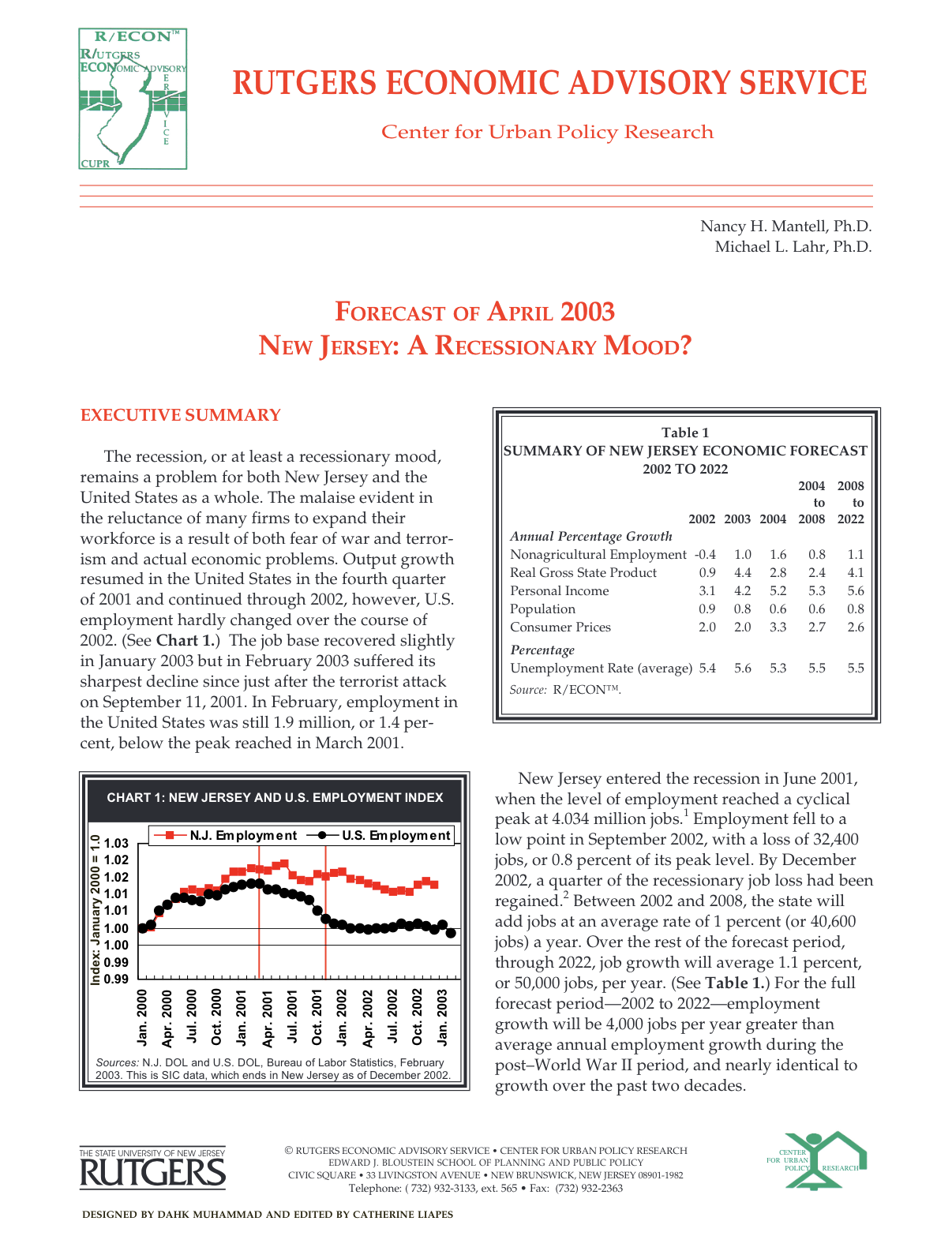The recession, or at least a recessionary mood, remains a problem for both New Jersey and the United States as a whole. The malaise evident in the reluctance of many firms to expand their workforce is a result of both fear of war and terrorism and actual economic problems. Output growth resumed in the United States in the fourth quarter of 2001 and continued through 2002, however, U.S. employment hardly changed over the course of 2002. The job base recovered slightly in January 2003 but in February 2003 suffered its sharpest decline since just after the terrorist attack on September 11, 2001. In February, employment in the United States was still 1.9 million, or 1.4 per- cent, below the peak reached in March 2001.
New Jersey entered the recession in June 2001, when the level of employment reached a cyclical peak at 4.034 million jobs. 1 Employment fell to a low point in September 2002, with a loss of 32,400 jobs, or 0.8 percent of its peak level. By December 2002, a quarter of the recessionary job loss had been regained. 2 Between 2002 and 2008, the state will add jobs at an average rate of 1 percent (or 40,600 jobs) a year. Over the rest of the forecast period, through 2022, job growth will average 1.1 percent, or 50,000 jobs, per year. For the full forecast period—2002 to 2022—employment growth will be 4,000 jobs per year greater than average annual employment growth during the post–World War II period, and nearly identical to growth over the past two decades.
